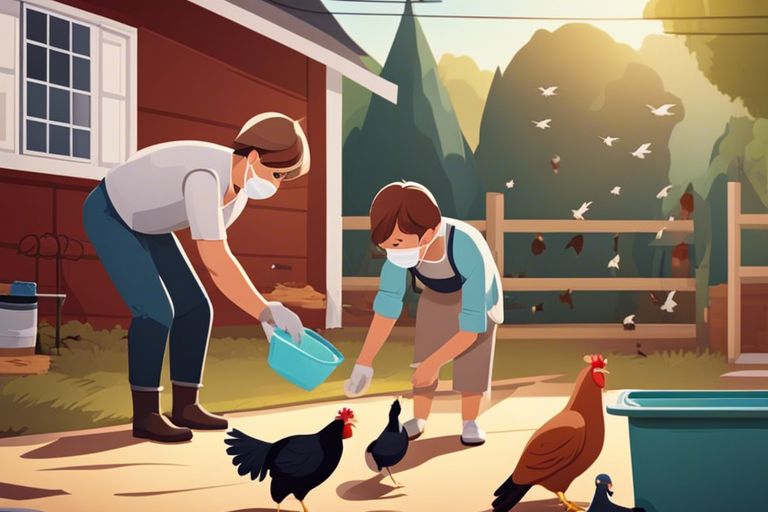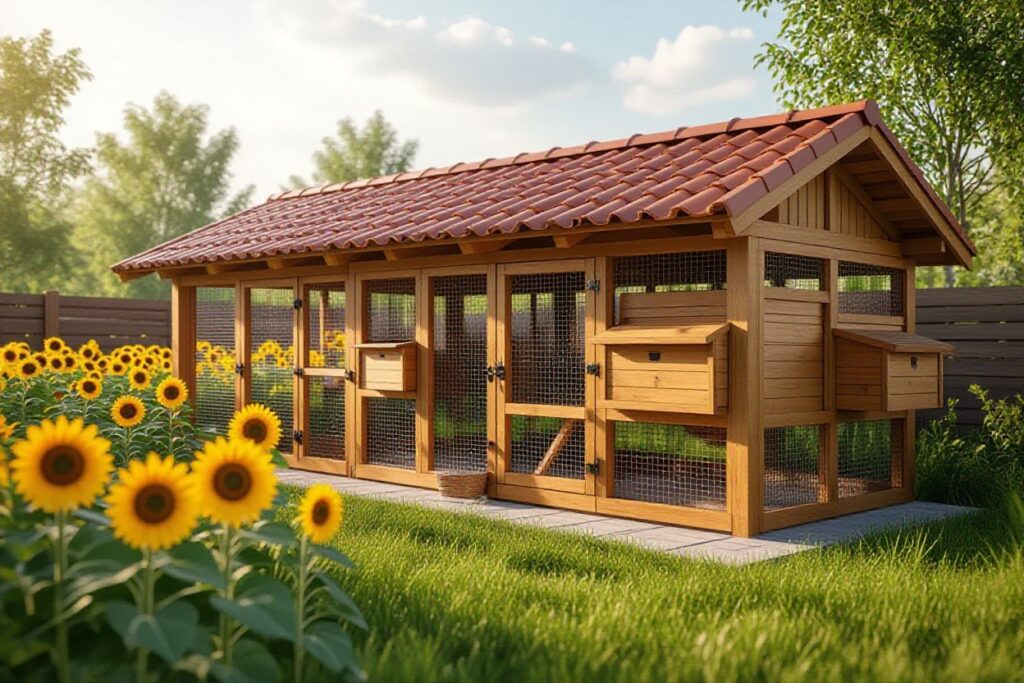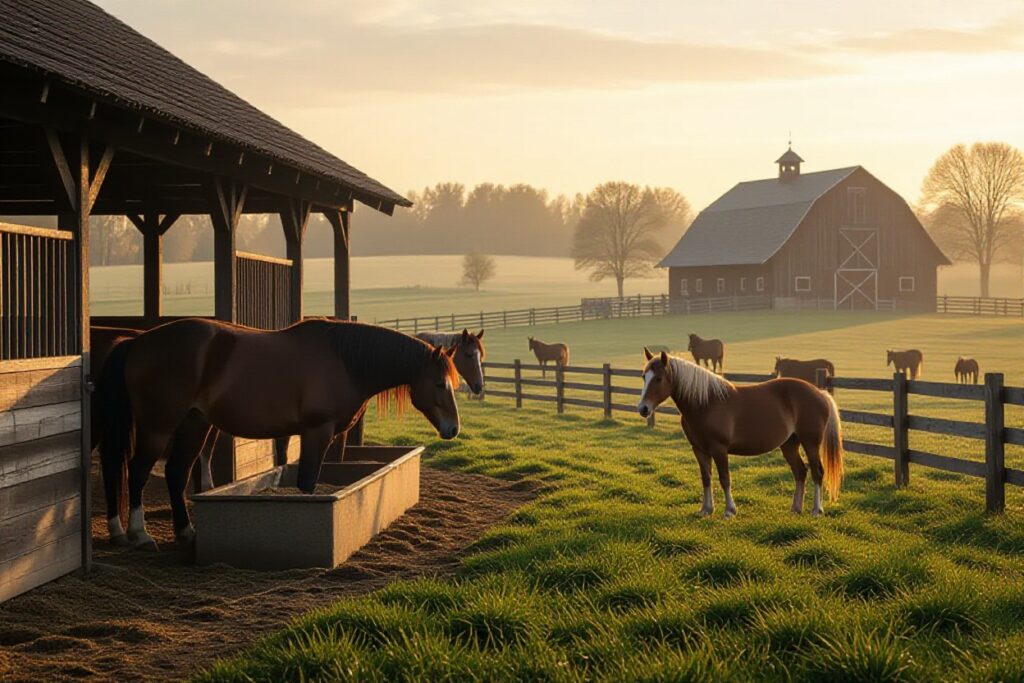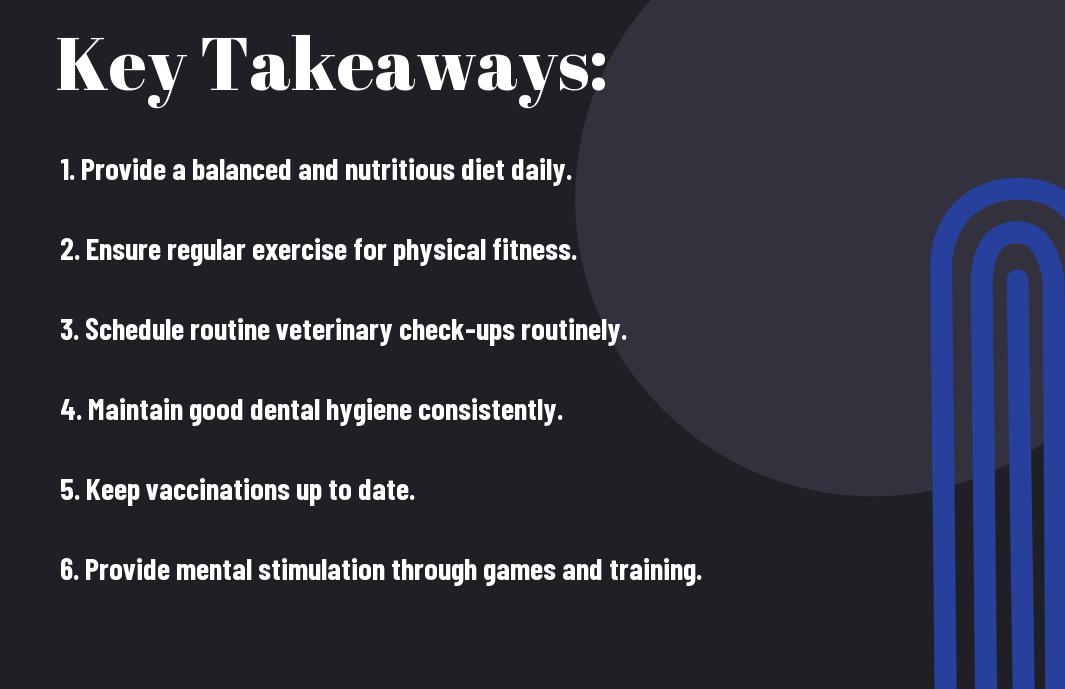Poultry owners must prioritize biosecurity practices to protect their flocks from diseases and maintain a healthy environment. Understanding the fundamentals of biosecurity is crucial for safeguarding the well-being of your poultry and preventing the spread of infections. By implementing simple yet effective biosecurity measures, you can create a secure and disease-free environment for your feathered friends. This beginner’s guide will provide you with important tips and strategies to establish robust biosecurity practices on your poultry farm or backyard coop.
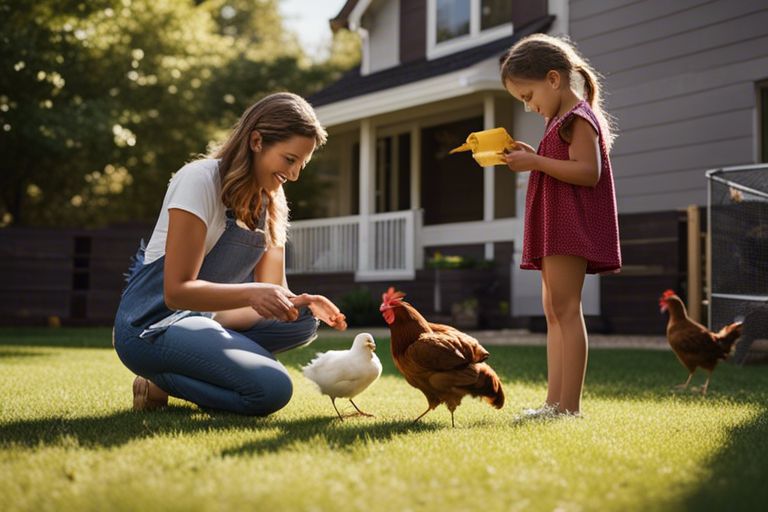
Types of Biosecurity Measures
Your poultry’s health is vital, and implementing biosecurity measures is crucial to prevent the spread of diseases. Different types of biosecurity measures are crucial to keep your flock safe and healthy. Knowing the various measures available will help you create a robust biosecurity plan tailored to your poultry farm’s specific needs.
| 1. Structural Measures | 2. Operational Measures |
| 3. Personnel Management | 4. Sanitary Measures |
| 5. Pest Control | 6. Vaccination Programs |
| 7. Emergency Preparedness | 8. Record Keeping |
| 9. Visitor and Equipment Management | 10. Quarantine Practices |
Structural Measures
Biosecurity starts with securing your poultry farm’s physical structures. This includes ensuring that the coop, fencing, and any buildings are robust and secure to prevent the entry of unwanted predators or diseases. Implementing proper ventilation systems and waste management strategies are also crucial structural measures to maintain a healthy environment for your poultry.
Operational Measures
Little changes in your day-to-day operations can make a significant impact on your poultry’s health. It involves implementing protocols such as designated entry points, footbaths, and protective clothing to prevent the introduction and spread of diseases. Regular cleaning and disinfection of equipment and feed storage areas are also crucial operational measures to reduce disease transmission within your flock. It is crucial to establish strict biosecurity protocols and ensure that all staff members are trained and comply with these procedures to maintain a healthy poultry environment.
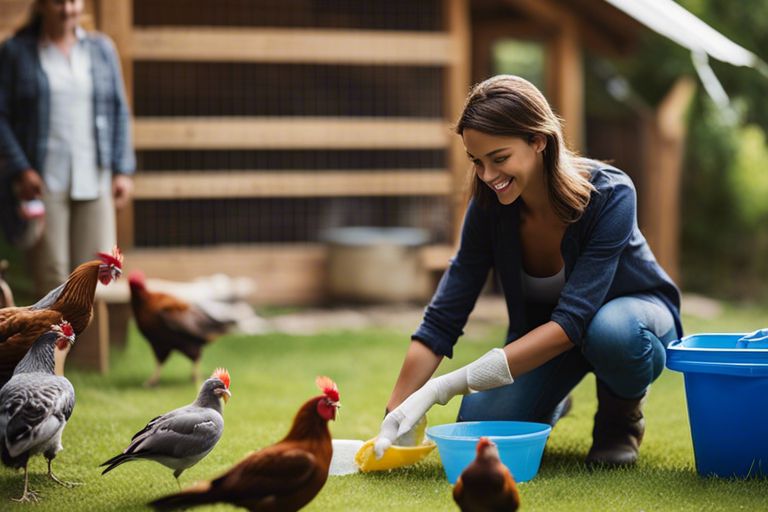
The Step-by-Step Guide to Implementing Biosecurity
| Assessing Your Farm’s Vulnerabilities | Establishing a Biosecurity Plan |
On Assessing Your Farm’s VulnerabilitiesOn your poultry farm, it’s crucial to assess the vulnerabilities that could potentially introduce diseases. Look at factors such as farm location, visitor access, wildlife presence, and biosecurity practices currently in place. Identifying these weak points will help you form a targeted biosecurity plan to mitigate risks. |
Establishing a Biosecurity PlanClearly define the biosecurity measures you will implement on your farm. This includes protocols for visitors, equipment sanitization, waste management, and disease monitoring. Ensure all farm personnel are trained in biosecurity procedures and understand the importance of adhering to them consistently. |
Plan: A well-documented biosecurity plan is necessary for the effective implementation of biosecurity practices on your poultry farm. This plan should be comprehensive and tailored to the specific needs of your operation, addressing potential risks and outlining preventative measures. Regularly review and update your biosecurity plan to stay ahead of emerging threats and ensure the ongoing health of your flock.
Tips for Effective Biosecurity Management
Once again, it is crucial for poultry owners to implement strict biosecurity measures to protect their flocks from the threat of diseases. By following best practices, you can minimize the risk of infections and keep your birds healthy.
- Regularly clean and disinfect all equipment and facilities.
- Control access to your poultry farm and limit visitors.
- Monitor the health of your birds regularly and isolate sick or new arrivals.
- Practice good hygiene by washing hands and changing clothes before entering the poultry area.
Daily Routines and Hygiene
Any lapse in daily routines and hygiene practices can create opportunities for diseases to enter your poultry farm. Make it a habit to clean and disinfect equipment, facilities, and vehicles regularly. Implement strict biosecurity measures to prevent the spread of infections within your flock.
Training and Educating Farm Personnel
For effective biosecurity management, it is necessary to educate all farm personnel about the significance of biosecurity measures. Regular training sessions should be conducted to reinforce the importance of following protocols and procedures to minimize the risk of disease outbreaks.
Tips for training farm personnel include providing clear guidelines on proper hygiene practices, explaining the importance of isolating sick birds, and emphasizing the need for strict biosecurity measures at all times.
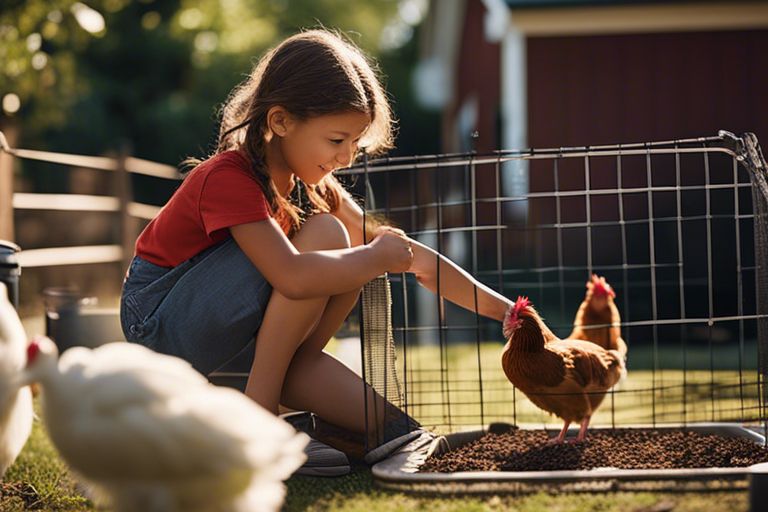
Factors Influencing Biosecurity on Poultry Farms
All poultry owners should be aware of the various factors that can influence the biosecurity practices on their farms. By understanding these factors, owners can take proactive measures to protect the health and well-being of their flocks.
Farm Size and Location
One important factor that influences biosecurity on poultry farms is the size and location of the farm. Larger farms may face different biosecurity challenges compared to smaller farms, due to the scale of operations. Additionally, farms located in high-risk areas, such as near water sources or other poultry farms, may have an increased risk of disease outbreaks.
Poultry Density and Species Variation
One key aspect that impacts biosecurity is the density of poultry on the farm and the variation in species present. Farms with high poultry density are at a greater risk of disease spread due to the closer proximity of birds. Moreover, farms that house multiple species of poultry face additional challenges in terms of disease management and control.
Farms should carefully consider these factors when implementing biosecurity measures to ensure the health and safety of their poultry. Knowing how farm size, location, poultry density, and species variation can influence biosecurity is important for developing an effective biosecurity plan.
Pros and Cons of Biosecurity Practices
| Pros | Cons |
| Prevents disease spread | Can be time-consuming |
| Protects poultry health | Initial cost of setup |
| Increases farm productivity | Requires strict adherence |
| Reduces economic losses | May cause inconvenience |
Advantages of Rigorous Biosecurity
Consistent and rigorous biosecurity practices can significantly decrease the risk of disease outbreaks on poultry farms. By implementing strict biosecurity measures, owners can prevent the spread of pathogens among birds, thus safeguarding the overall health and productivity of their flock. This proactive approach not only minimizes economic losses but also promotes sustainable poultry farming practices.
Potential Challenges and Limitations
Limitations in implementing comprehensive biosecurity practices may arise due to the time and resources required for setup and maintenance. Some poultry owners might find it challenging to strictly adhere to biosecurity protocols consistently, leading to potential lapses that could compromise the effectiveness of the overall biosecurity program.
Another aspect to consider is the initial investment needed to establish biosecurity infrastructure and protocols, which could pose a barrier for some poultry owners, especially those with limited financial resources. Additionally, biosecurity measures may cause inconvenience to daily farm routines and require ongoing training and monitoring to ensure compliance across all operations.
Conclusion
Taking this into account, implementing proper biosecurity practices is crucial for poultry owners to prevent disease outbreaks and maintain the health of their flock. By following the guidelines outlined in this beginner’s guide, such as controlling access to your flock, practicing good hygiene, and monitoring for signs of illness, you can significantly reduce the risk of disease transmission. Remember that biosecurity is a continuous process and requires diligence and commitment. Ultimately, your efforts in biosecurity will not only protect your poultry but also contribute to the overall health and well-being of the poultry industry as a whole.
FAQ
Q: Why is biosecurity important for poultry owners?
A: Biosecurity is crucial for poultry owners to prevent the spread of diseases among their flock and reduce the risk of economic losses.
Q: What are some basic biosecurity practices for poultry owners?
A: Basic biosecurity practices for poultry owners include restricting access to the farm, disinfecting equipment, and monitoring the health of the flock regularly.
Q: How can poultry owners limit exposure to diseases?
A: Poultry owners can limit exposure to diseases by implementing strict biosecurity protocols, such as controlling visitor access and quarantining new birds.
Q: Why is it important to quarantine new birds?
A: Quarantining new birds is important because it allows poultry owners to monitor the health of the birds and prevent the spread of any potential diseases to the existing flock.
Q: What should poultry owners do if they suspect a disease outbreak in their flock?
A: If poultry owners suspect a disease outbreak in their flock, they should immediately isolate the infected birds, contact a veterinarian, and follow any recommended biosecurity measures.
Q: How often should poultry owners clean and disinfect their equipment?
A: Poultry owners should clean and disinfect their equipment regularly, ideally between each use, to prevent the spread of diseases and maintain a healthy environment for the flock.
Q: What role do visitors play in poultry biosecurity?
A: Visitors can pose a biosecurity risk by inadvertently bringing diseases onto the farm. Poultry owners should restrict visitor access and provide appropriate biosecurity measures for anyone entering the premises.
